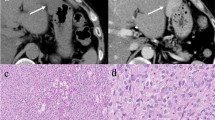Abstract
Background
Malignant neoplasms of the appendix have different behavior based on their histologic subtypes in anecdotal series. Current staging systems do not capture the diversity of histologic subtypes in predicting outcomes.
Methods
We queried all patients with appendiceal malignancies captured in the Surveillance, Epidemiology, and End Results (SEER) database from 1973 to 2007. Tumors were classified as colonic type adenocarcinoma, mucinous adenocarcinoma, signet ring cell type, goblet cell carcinoid, and malignant carcinoid. We compared incidence, overall survival, and disease-specific survival for these tumors on the basis of patient, tumor, and therapy characteristics. Estimates from Cox proportional hazard modeling were used to predict hazard ratios for differing histologic subtypes with similar tumor, node, metastasis system (TNM) stages.
Results
Of the 5672 patients identified, we included 5655 (99%) in our analysis. The 5-year disease-specific survival rates were 93% for malignant carcinoid, 81% for goblet cell carcinoid, 55% for colonic type adenocarcinoma, 58% for mucinous adenocarcinoma, and 27% for signet ring cell type. Predicted estimates of adjusted hazard ratios revealed an 8-fold difference between histologic subtypes for similar TNM stages.
Conclusions
Histologic subtype is an important predictor of disease-specific survival and overall survival in patients with appendiceal neoplasms. Addition of the histologic subtype to the TNM staging is simple and may improve prognostication.


Similar content being viewed by others
References
Compton C, Fenoglio-Preiser CM, Pettigrew N, Fielding LP. American Joint Committee on Cancer Prognostic Factors Consensus Conference: Colorectal Working Group. Cancer. 2000;88:1739–57.
Jann H, Roll S, Couvelard A, Hentic O, et al. Neuroendocrine tumors of midgut and hindgut origin: tumor–node–metastasis classification determines clinical outcome. Cancer. 2011;117:3332–41.
Landry CS, Brock G, Scoggins CR, McMasters KM, Martin RC 2nd. Proposed staging system for colon carcinoid tumors based on an analysis of 2,459 patients. J Am Coll Surg. 2008;207:874–81.
Rindi G, Klöppel G, Couvelard A, et al. TNM staging of midgut and hindgut (neuro) endocrine tumors: a consensus proposal including a grading system. Virchows Arch. 2007;451:757–62.
Collins DC. 71,000 human appendix specimens. A final report, summarizing forty years’ study. Am J Proctol. 1963;14:265–81.
Livingston EH, Woodward WA, Sarosi GA, Haley RW. Disconnect between incidence of nonperforated and perforated appendicitis: implications for pathophysiology and management. Ann Surg. 2007;245:886–92.
McCusker ME, Coté TR, Clegg LX, Sobin LH. Primary malignant neoplasms of the appendix: a population-based study from the Surveillance, Epidemiology and End-Results program, 1973–1998. Cancer. 2002;94:3307–12.
Sugarbaker PH. New standard of care for appendiceal epithelial neoplasms and pseudomyxoma peritonei syndrome? Lancet Oncol. 2006;7:69–76.
National Cancer Institute. Surveillance Epidemiology and End Results. http://seer.cancer.gov/about/.
Koepsell T, Weiss N, editors. Epidemiological methods: studying the occurrence of illness. Vol. 1. New York: Oxford University Press; 2003.
McGory ML, Maggard MA, Kang H, O’Connell JB, Ko CY. Malignancies of the appendix: beyond case series reports. Dis Colon Rectum. 2005;48:2264–71.
Esquivel J, Elias D, Baratti D, Kusamura S, Deraco M. Consensus statement on the loco regional treatment of colorectal cancer with peritoneal dissemination. J Surg Oncol. 2008;98:263–7.
Ronnett BM, Kurman RJ, Shmookler BM, Sugarbaker PH, Young RH. The morphologic spectrum of ovarian metastases of appendiceal adenocarcinomas: a clinicopathologic and immunohistochemical analysis of tumors often misinterpreted as primary ovarian tumors or metastatic tumors from other gastrointestinal sites. Am J Surg Pathol. 1997;21:1144–55.
Nathan H, Pawlik TM. Limitations of claims and registry data in surgical oncology research. Ann Surg Oncol. 2008;15:415–23.
Author information
Authors and Affiliations
Corresponding author
Rights and permissions
About this article
Cite this article
Turaga, K.K., Pappas, S.G. & Gamblin, T.C. Importance of Histologic Subtype in the Staging of Appendiceal Tumors. Ann Surg Oncol 19, 1379–1385 (2012). https://doi.org/10.1245/s10434-012-2238-1
Received:
Published:
Issue Date:
DOI: https://doi.org/10.1245/s10434-012-2238-1




